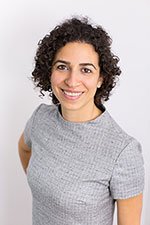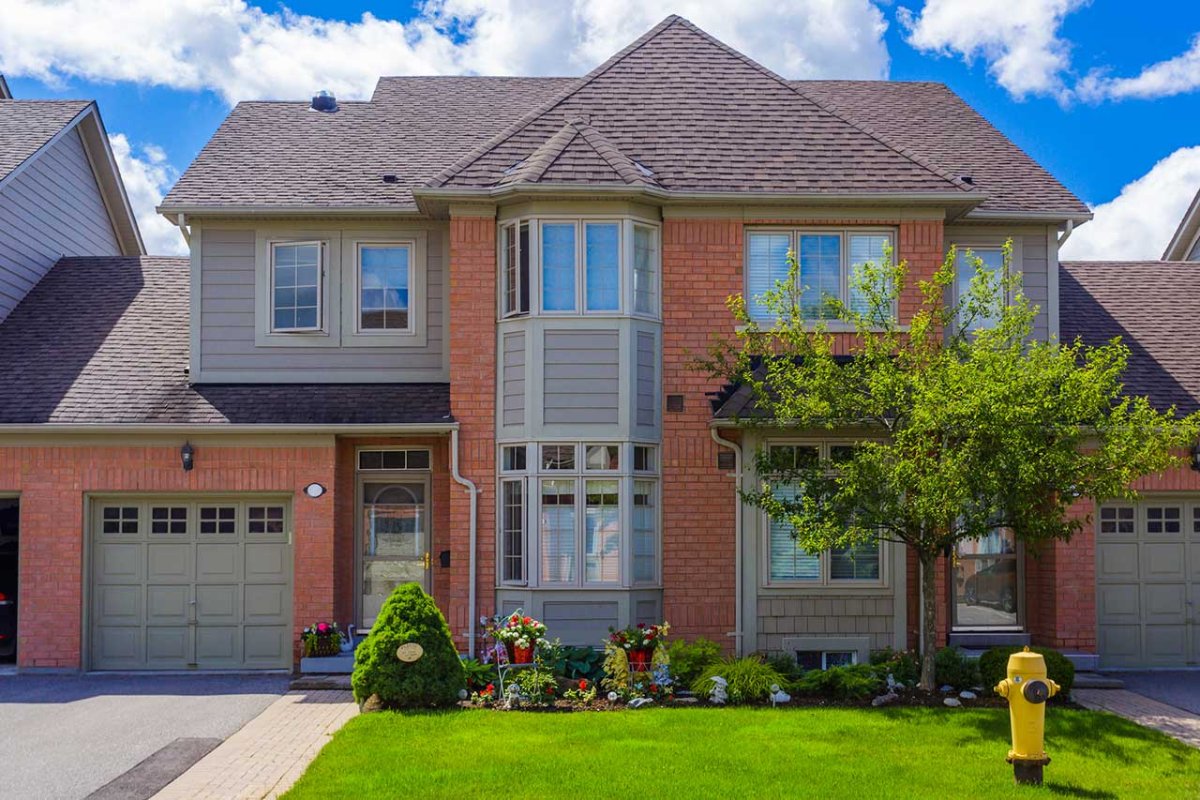Many of us have grown up hearing about the unique neighbourhoods lying in Downtown Toronto. Toronto is a place where every tourist feels at home. Whether it’s the world-famous Niagara Falls or the streets of Yonge and Finch, the city has something for everyone.
Yonge and Finch is a major intersection in Toronto, Ontario, Canada. It is located at the northwest corner of Yonge Street and Finch Avenue in the North York district of Toronto. Yonge and Finch have a busy entertainment district and some of the city’s most impressive buildings.
This guide has all about what you want to know about Yonge and Finch, a lot of exciting stuff, and numerous places to go and enjoy a great time. Read more!
History and Demographic Of Yonge and Finch
The neighbourhood is named for two intersecting streets in Toronto, Yonge Street, and Finch Avenue. Yonge Street is one of the oldest streets in Toronto and forms the spine of downtown.
The street was named by John Graves Simcoe, the first lieutenant-governor of Upper Canada, after his friend Sir George Yonge, an English politician and soldier.
Yonge Street has always been considered one of Toronto’s primary thoroughfares since its beginning as York-to-the-Sea Road (later Yonge Street). Whereas Finch Ave got its name because it was the main road connecting the townships of Yorkville and North Toronto.
The intersection of Yonge and Finch is notable as the center of Canada’s first major suburban development boom, which began in the 1950s. In 1973, the province of Ontario declared the area an urban growth center. Since then, the population has grown exponentially.
The intersection was developed after World War II as an auto-centric mixed-use community focused on residential development. It is still home to many businesses catering to people who live in the area. Immigrant communities include prominent Chinese, Korean, and Persian communities.
Today, Yonge and Finch is home to over 250,000 people who call this neighbourhood home. This area has experienced much change over time and continues to evolve with each passing year.
Moreover, the area is now a bustling commercial and residential hub, with high-rise apartment buildings, office towers, and various retail and service businesses.
Cost Of Living
The cost of living in Yonge and Finch is 39% higher than Toronto’s average. The cost of living in Toronto is 52.4% higher than the national average.
According to statistics Canada, the average household income in Yonge and Finch is $66,467 per year or approximately $5,538 per month. This figure includes all sources of income, including employment earnings, government transfers, child benefits, and other money received.
The cost of living in Yonge and Finch, a neighbourhood in Toronto, Canada, can vary widely depending on several factors, such as your housing situation, transportation needs, and lifestyle. Here are some general estimates to give you an idea of the costs you might expect to incur:
Housing: Rent for a one-bedroom apartment in Yonge and Finch can range from around $1250 to $2,500 per month, depending on the location and quality of the apartment. If you want to purchase a home, prices in the area can range from around $500,000 to over $1 million.
Transportation: Yonge and Finch have a comprehensive public transportation system, including buses, streetcars, and subways. A monthly pass for unlimited travel on the TTC costs $150, while a single fare is $4. If you prefer to drive, expect to pay around $100 per month for parking in the Yonge and Finch areas.
Groceries: The cost of groceries is generally similar to other major cities in Canada and the United States. A weekly grocery bill for one person might cost around $100 to $150, depending on your eating habits and the types of foods you purchase.
Entertainment and dining out: Yonge and Finch has a vibrant arts and culture scene, with many museums, galleries, and theatres. Ticket prices for events and attractions vary widely but expect to pay around $20 to $30 for a movie ticket and $50 to $100 for a theatre show.
Dining out can also be expensive, with a meal at a mid-range restaurant ranging from $25 to $50 per person.
Overall, the cost of living in Yonge and Finch is high, mainly if you rent or buy a home. However, there are ways to save money, such as cooking at home instead of dining out, using public transportation instead of driving, and looking for discounts and deals on entertainment and cultural events.
Accommodation In Yonge And Finch
The neighbourhood is primarily residential, with some commercial businesses along Yonge Street. The area is home to many ethnic groups, including East Indian, Chinese, Filipino, Russian and Jamaican populations. There are also many condominium developments being built in this area.
If you’re looking for accommodation in this area, there are two main options: renting an apartment or buying a house. If you’re looking for an apartment, there are plenty of options within walking distance from Yonge Street, which runs through the center of this neighbourhood.
In case you’re going to be staying in Yonge and Finch for longer than a few days, then renting an apartment might be a good idea so that you can have more space than just a hotel room would offer; this will also keep costs down!
For those who prefer owning their own home but don’t want all the hassle that goes along with maintaining one), it is recommended to look into condos instead. Condos offer all the benefits of owning your place without any hassle since they’re managed by someone else.
It’s still expanding rapidly and becoming increasingly convenient to downtown, making it an excellent choice for those who adore city life but prefer a more affordable condo.
There are also several vacation rentals available in the Yonge and Finch area, including apartments, condos, and houses that can be rented on a short-term or long-term basis. Airbnb and other vacation rental websites often have various options available in this area.
If you’re looking for a more budget-friendly option, there are also some hostels and bed and breakfast inns in the area. These accommodations generally offer shared dormitory-style rooms and common areas and may also have private rooms.
Some popular hotels in Yonge and Finch include:
- The Willowdale Hotel Toronto North York
- Library Suites Hotel
- Hotel Novotel Toronto North York
These hotels offer a range of amenities, such as fitness centers, parking, pools, and meeting halls.
How to Get Around the Yonge and Finch
Are you curious about the best route to and around Yonge and Finch in Toronto, Canada? When you’re in Yonge and Finch, it’s easy to get around. The area is very walkable, and there are also plenty of transit options.
Driving
If you’re looking for a car, there are plenty of parking places. There are many metered street spots and parking garages nearby. You’ll be able to find a spot near your destination quickly. A network of highways and expressways can take you to other parts of the city and beyond.
Public Transportation
The area is well-served by public transit. You should take advantage of this; it’s faster than driving around! If you need to get from one end of the neighbourhood to the other, use the TTC subway system instead of driving around aimlessly looking for parking when it could be so much easier with public transportation.
As the TTC travels along Yonge Street, it stops at the major intersections between Sheppard Avenue and Finch Avenue, including Markham and Newmarket. The York Region transit buses run through Marham, Thornhill, and Vaughan, as well as Oshawa, Keswick, Brampton, Miltona, and the GO service to Oakville.
Walking
The Yonge and Finch area is pedestrian-friendly, with many sidewalks and pedestrian crossings. You can also use the PATH, a network of underground pedestrian walkways, to get around.
Regardless of how you choose to get around, it’s always a good idea to plan your route and be aware of any construction or other disruptions that may affect your travel.
Check Out Uptown Toronto – Sheppard to Finch in North York:
Getting hungry? So Where to Eat
Yonge Street, also known as “The Miracle Mile,” is home to some of Toronto’s most iconic landmarks, including the Eaton Centre, Yonge-Dundas Square and Ryerson University.
The area is often described as Toronto’s most multicultural neighbourhood and has a vibrant nightlife scene. It’s also home to many of the city’s top restaurants.
If you’re looking for a place to eat, there are plenty of options in Yonge and Finch. Here are some recommendations:
The Owl Of Minerva
The neighbourhood of Yonge and Finch is home to a large Korean population. This is the place to go if you’re looking for delicious Korean food. This restaurant serves authentic Mexican food that satisfies any craving for tacos or burritos.
Their menu features dozens of tacos, including shrimp, pork belly, and octopus, and vegetarian options like cauliflower steak or crispy cauliflower tacos!
Buk Chang Dong Soon Tofu
This Korean restaurant is known for its soon tofu (stir-fried bean curd), which comes in various combinations of vegetables and meat.
Buk Chang Dong Soon Tofu is a small restaurant specializing in traditional Korean dishes like dumplings and bibimbap. It’s also known for its tofu soup, which features soft tofu served with kimchi and boiled eggs.
Kinton Ramen
Kinton is a Japanese restaurant that serves dishes with a twist. The food is delicious, and the atmosphere is relaxing. The restaurant has a bar area that can be reserved for private events, making it an excellent choice for groups looking for a place to have lunch or dinner.
The menu includes traditional Japanese dishes such as sashimi and sushi and fusion dishes such as taco rice and ramen burgers. Kinton is worth checking out if you’re looking for a great place to eat near Yonge and Finch!
Soul Café
Soul Café is a great place to get a meal. They serve Korean and Asian food and have a great selection of tasty food. The prices are reasonable, especially compared to other restaurants in the area.
Best Places To Shop
Yonge and Finch are one of Toronto’s most popular shopping areas for visitors and residents alike. There are many shoppers drug mart, restaurants, and attractions to choose from.
The Metro
The Metro supermarket at Yonge and Finch is a significant place of commerce in the neighbourhood. It stocks all the essentials, including fresh produce and meat, household items, cleaning products and more.
Metro also operates a dry cleaner inside the store. It’s an excellent place to do all of your shopping in one stop, although the prices reflect the overhead of a supermarket open 24/7.
Super Khorak Supermarket
Super Khorak Supermarket is a Persian supermarket located in North York at Yonge and Finch. The store is open 7 days a week from 7 am until midnight.
It is one of the largest Persian supermarkets in Toronto, with over 3500 square feet of retail space, featuring the widest selection of Persian and Middle Eastern products.
The store offers an extensive line of canned goods, fresh produce, spices and herbs, dry goods such as rice and pasta, dairy products including cheese and yogurt, and prepared foods such as kabobs and falafel sandwiches.
Empress Walk
Empress Walk is a shopping center in the Yonge and Finch area of North York, Toronto. It is located at the corner of Yonge Street and Empress Avenue. The building is an example of Modernist architecture.
The store has a bakery, butcher, seafood, and cosmetic counter. Empress Walk also has a selection of groceries from Vietnam, Korea and Japan.
Fun Things to Do in Yonge and Finch
Yonge and Finch have a lot to offer, including entertainment and nightlife. Here are some fun things to do in Yonge and Finch:
Twister Karaoke
The Twister Karaoke is a fun place to hang out with friends. This venue is perfect for those who love karaoke nights but want something different from the typical pub scene.
With over 300,000 songs in nine different languages, there are plenty of options for everyone to have a good time at this venue. The bar also has some of the best drinks in the area, and you can enjoy them while singing your heart out at this bar.
Gibson House Museum
The Gibson House Museum is a National Historic Site of Canada and an excellent example of the Georgian style of architecture.
The museum is located in the neighbourhood of Yonge and Finch and is just a short walk from the subway Yonge-Finch station. It’s an ideal place to visit if you want to learn more about life in Toronto during the mid-18th century.
Cosmic Bowling Nights
Newtonbrook Bowlerama is the perfect place to have a fun and relaxed night with family and friends. The bowling alley offers Cosmic Bowling nights, which include music, laser lights, black lights and glow-in-the-dark lanes.
Bowling is a fun activity that anyone can enjoy. It’s also a great way to get active and improve your health. Newtonbrook Bowlerama offers other fun activities, such as laser tag and mini golf, during the weekdays.
See a play at the theatre.
The area is also home to many theatres, including the Sony Centre for the Performing Arts, which offers live performances of all kinds.
Theatres are located all over the city, but there’s something special about getting up close and personal with your favourite stage productions. The Elgin Theatre is a historic landmark that has hosted performances from some of Hollywood’s biggest names.
Get your fill of Yonge-Dundas Square.
Yonge-Dundas Square is the heart of downtown Toronto and a must-see destination for visitors. Take in the sights and sounds of Yonge-Dundas Square with its unique urban design features. Restaurants, shops and public art installations surround it. This makes it a popular spot for tourists and locals alike!
You can also enjoy free concerts at the square annually; some even feature free food trucks. The concert series typically runs from early May until late October each year, so check out their website before heading out!
What Makes Yonge and Finch Special?
Yonge and Finch is a major intersection in Toronto, Ontario, Canada. It is a bustling and diverse neighbourhood with a mix of residential, commercial, and cultural attractions.
- One of the main reasons Yonge and Finch are special is its location. It is situated near the northeast corner of Toronto and is easily accessible by major roads, highways, and public transportation. This makes it a convenient hub for residents and visitors alike.
- Another reason Yonge and Finch are special is its diverse community. The area is home to a variety of cultures and backgrounds, which can be seen in the diverse mix of businesses and restaurants located in the area.
This diversity is reflected in the local events and festivals that occur throughout the year, such as the annual Korean Festival and the Toronto Japanese Summer Festival.
- In addition to its location and diverse community, Yonge and Finch are also home to recreational and cultural attractions. These include the Finch subway stop south, which provides easy access to the rest of the city, and the Finch Hydro Corridor.
This multi-use bike trails runs through the neighbourhood and is famous for walking, biking, and other outdoor activities. The area is also home to many parks and green spaces, such as the Toronto Botanical Garden and Edwin S. G. Dennis Park.
Overall, Yonge and Finch is a vibrant and dynamic neighbourhood that offers something for everyone. Its accessibility, diversity, and recreational and cultural attractions make it a special place to live or visit.
FAQs
What is the Quality of Life in Yonge and Finch?
The quality of life in Yonge and Finch is affected by factors such as the level of crime, the cost of living and the availability of services.
Crime rates in the area are high compared to other areas in Toronto. The neighbourhood’s crime index is 35% higher than the city average. The cost of living in this area is higher than average; this means that people spend more on their expenses, such as rent and groceries than residents in other parts of Toronto.
The public transit network in this area is excellent, but there need to be more hospitals or medical centers within walking distance from most homes.
In Canada, Which Little Town is the Prettiest?
Canada is a beautiful country with abundant natural resources and vibrant history. Canada is also home to some of the most beautiful little towns in the world. From charming seaside villages to lakeside hamlets, here are some of the prettiest little towns in Canada.
- Baie-Saint-Paul, Quebec
- Elora, Ontario
- Mahone Bay, Nova Scotia.
- Churchill, Manitoba
- Golden, British Columbia
- Tobermory, Ontario ·
What is Canada’s Best Lifestyle City?
The Canadian lifestyle is a mix of urban and rural living. Canada is the second largest country in the world, with more than 3 million square kilometres. It has a population of approximately 35 million, with nearly 60% living in cities.
The Canadian lifestyle varies from province to province. The west coast is known for its beaches and sun, while the east coast is known for its history, culture and foodie scene.
Here are some fantastic cities to enjoy life:
- Toronto
- Calgary
- Vancouver
- Halifax
- Oakville
Conclusion
Yonge and Finch is a neighbourhood that’s been rising for a while now. If you’ve been there, you know what it’s all about: great food and bubble tea, friendly people, and plenty of opportunities to get involved in your community.
For those who haven’t visited Yonge and Finch yet, this guide has given you a better understanding of the area. While looking for an alternative to the hustle and bustle of downtown Toronto, this neighbourhood is worth checking out.
In the event that you have any inquiries, remarks, or suggestions, please do not be reluctant to get in touch with us!


